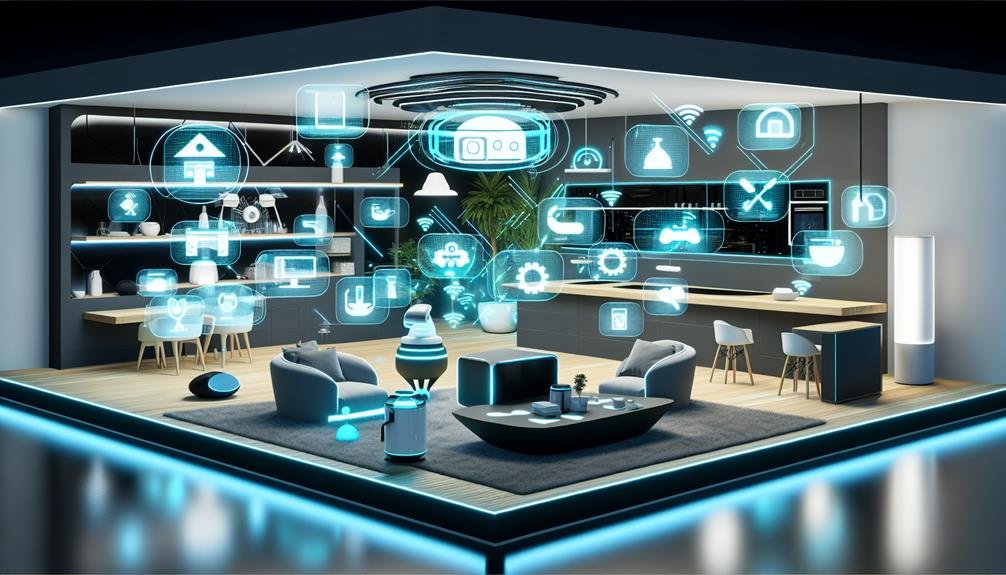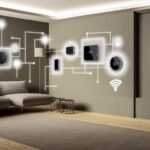Imagine your smart home as a symphony, where every device and system harmoniously work together to create a seamless experience. Just like a conductor guides the musicians, smart home automation standards and protocols play a crucial role in orchestrating the various components of your connected home.
From ensuring compatibility and simplifying integration, to enhancing efficiency and security, these standards and protocols lay the foundation for a well-organized and efficient smart home ecosystem.
But why are they so important? Well, let's delve into the world of smart home automation and discover the key reasons that make these standards and protocols indispensable.
Key Takeaways
- Compatibility and interoperability are crucial for smart home automation systems, but lack of industry-wide standards can hinder seamless communication between devices.
- Adhering to industry-wide standards allows manufacturers to ensure compatibility with a wider range of devices and simplifies the integration process.
- Smart home automation saves time and effort by automating routine tasks and optimizing energy consumption through automated adjustments.
- Security and privacy are crucial considerations in smart home automation systems, and robust security measures and data protection protocols should be implemented to prevent unauthorized access and misuse of personal information.
Ensuring Compatibility and Interoperability
Ensuring compatibility and interoperability is crucial in the realm of smart home automation, as it allows various devices and systems to seamlessly communicate and work together to enhance the overall functionality and convenience of the connected home.
However, achieving this level of compatibility and interoperability isn't without its challenges.
One of the major challenges in achieving compatibility is the lack of industry-wide standards. With a multitude of smart home devices and systems available in the market, each with their own proprietary protocols and technologies, it becomes difficult for consumers to mix and match devices from different manufacturers. This lack of standardization hampers the ability of devices to communicate and work together harmoniously.
Interoperability challenges also arise from the ever-evolving nature of smart home technology. As new devices and systems are introduced into the market, compatibility issues can arise due to differences in communication protocols or software updates. Without a standardized framework, consumers may find themselves limited in their choices or forced to rely on specific brands or ecosystems.
To address these challenges, industry-wide standards are essential. These standards would establish a common set of protocols and specifications that enable seamless communication and interoperability between different smart home devices and systems. By adhering to these standards, manufacturers can ensure their products are compatible with a wider range of devices, offering consumers greater freedom in choosing the devices that best suit their needs.
Simplifying Integration of New Devices
To facilitate the seamless integration of new devices into a smart home automation system, it's important to establish streamlined processes and standardized protocols that allow for easy compatibility and interoperability. This not only reduces complexity but also improves accessibility, giving you the freedom to choose from a wide range of devices without worrying about compatibility issues.
Here are three ways in which smart home automation standards and protocols simplify the integration of new devices:
- Plug-and-Play Compatibility: With standardized protocols in place, new devices can be easily recognized and connected to your smart home system without the need for complex configurations. This means that you can simply plug in a new device and it will seamlessly integrate with your existing setup.
- Easy Setup and Configuration: Standardized processes make it easier to set up and configure new devices. You don't have to spend hours reading manuals or troubleshooting compatibility issues. Instead, you can quickly and effortlessly set up your new device and start enjoying its benefits.
- Interoperability Across Brands: Smart home automation standards ensure that devices from different brands can work together harmoniously. This means that you can mix and match devices from different manufacturers, giving you the freedom to choose the best products for your specific needs.
Enhancing Efficiency and Convenience
Smart home automation standards and protocols enhance efficiency and convenience by streamlining processes and enabling seamless control of multiple devices. By implementing these standards and protocols, you can maximize energy savings and improve your quality of life.
One of the key benefits of smart home automation is the ability to automate routine tasks, saving you time and effort. For example, you can set up schedules to automatically adjust your thermostat, turn off lights when no one is in the room, and lock doors at bedtime. This not only eliminates the need for manual control but also ensures that energy is not wasted when it's not needed.
Moreover, smart home automation allows for the integration of various devices and systems, creating a cohesive and interconnected ecosystem. With the use of standards and protocols, you can control different devices from a single interface, such as a smartphone or a voice assistant. Imagine being able to turn on your lights, adjust the temperature, and start your favorite playlist with just a simple voice command.
To give you a better understanding, here's a table showcasing the potential automation scenarios and the resulting benefits:
| Automation Scenario | Benefits |
|---|---|
| Automatic light control | Energy savings, convenience |
| Climate scheduling | Energy savings, comfort |
| Security automation | Peace of mind, convenience |
| Entertainment control | Convenience, enhanced leisure |
With smart home automation, you can truly enhance efficiency and convenience in your daily life, all while minimizing energy consumption and improving your overall quality of life. Embrace the freedom that comes with having a smart home ecosystem tailored to your needs.
Promoting a Seamless User Experience
By seamlessly integrating various devices and systems, smart home automation standards and protocols promote a user experience that enhances efficiency and convenience. This seamless user experience is achieved through several key features:
- Improved Energy Consumption: Smart home automation allows for better control and management of energy consumption. With the ability to monitor and adjust energy usage in real-time, homeowners can optimize their energy consumption and reduce wastage. For example, smart thermostats can learn your schedule and adjust the temperature accordingly, saving energy when you're away.
- Optimized User Control: Smart home automation provides users with a centralized control system, allowing them to easily manage and control all connected devices from one place. Whether it's adjusting the lighting, controlling the security system, or managing entertainment devices, users have the freedom to customize and personalize their smart home experience according to their preferences.
- Seamless Integration: With standardized protocols, smart home devices from different manufacturers can communicate and work together seamlessly. This means that users can mix and match devices from various brands without worrying about compatibility issues. The seamless integration of devices enhances the user experience by providing a cohesive and unified smart home ecosystem.
Enhancing Security and Privacy
Enhancing security and privacy in smart home automation systems is crucial to protect personal data and ensure a safe and secure living environment. With the increasing connectivity and integration of devices in our homes, it's essential to address potential vulnerabilities and take steps to protect user data.
One of the main concerns with smart home automation is the potential for unauthorized access to personal information. Hackers may exploit vulnerabilities in the system or intercept data transmissions, posing a threat to the privacy and security of users. To mitigate these risks, robust security measures must be implemented. This includes encryption protocols, secure authentication methods, and regular software updates to address any known vulnerabilities.
Additionally, the protection of user data should be a top priority. Smart home automation systems collect vast amounts of personal information, including daily routines, preferences, and even biometric data. This data can be valuable to advertisers, hackers, or other malicious actors. By implementing strong data protection measures, such as anonymization techniques and strict access controls, users can have peace of mind knowing their information is secure.






